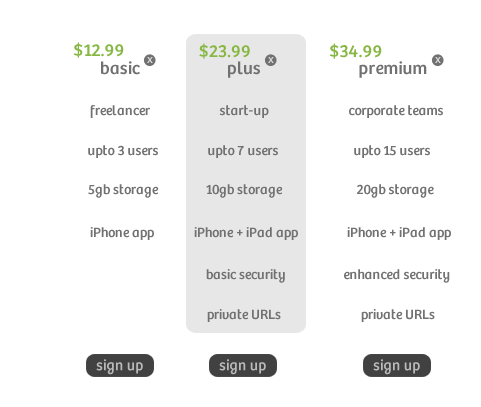MENU
Starting a Business
- Best Small Business Loans
- Best Business Internet Service
- Best Online Payroll Service
- Best Business Phone Systems
Our Top Picks
- OnPay Payroll Review
- ADP Payroll Review
- Ooma Office Review
- RingCentral Review
Our In-Depth Reviews
Finance
- Best Accounting Software
- Best Merchant Services Providers
- Best Credit Card Processors
- Best Mobile Credit Card Processors
Our Top Picks
- Clover Review
- Merchant One Review
- QuickBooks Online Review
- Xero Accounting Review
Our In-Depth Reviews
- Accounting
- Finances
- Financial Solutions
- Funding
Explore More
Human Resources
- Best Human Resources Outsourcing Services
- Best Time and Attendance Software
- Best PEO Services
- Best Business Employee Retirement Plans
Our Top Picks
- Bambee Review
- Rippling HR Software Review
- TriNet Review
- Gusto Payroll Review
Our In-Depth Reviews
- Employees
- HR Solutions
- Hiring
- Managing
Explore More
Marketing and Sales
- Best Text Message Marketing Services
- Best CRM Software
- Best Email Marketing Services
- Best Website Builders
Our Top Picks
- Textedly Review
- Salesforce Review
- EZ Texting Review
- Textline Review
Our In-Depth Reviews
Technology
- Best GPS Fleet Management Software
- Best POS Systems
- Best Employee Monitoring Software
- Best Document Management Software
Our Top Picks
- Verizon Connect Fleet GPS Review
- Zoom Review
- Samsara Review
- Zoho CRM Review
Our In-Depth Reviews
Business Basics
- 4 Simple Steps to Valuing Your Small Business
- How to Write a Business Growth Plan
- 12 Business Skills You Need to Master
- How to Start a One-Person Business
Our Top Picks
The Psychology of Choice: How Your Business Can Leverage Customer Decision-Making

Table of Contents
Imagine that you visit two different websites for companies in the same industry. One of the websites offers you three different choices, while the other presents 15 varied options.
Which website do you think will perform the best? Though it seems counterintuitive, the website offering fewer options will likely perform better and successfully convert more visitors into customers.
We may think we need to provide many options to ensure an optimal customer experience, but too many choices can lead to overwhelm and analysis paralysis. According to the psychology of choice, the more options we have, the less likely we are to make any decision at all.
As a business owner, you can learn to use the psychology of choice to your advantage. We’ll explain how to leverage the psychology of choice so consumers are comfortable taking action.
What is the psychology of choice?
The concept of the psychology of choice was coined in 2000 by psychologists Sheena Iyengar and Mark Lepper. It was made popular by a study evaluating consumer choices.
In their experiment, Iyengar and Lepper presented shoppers with 24 jam varieties, giving them a taste test and a $1 coupon off any jar. In a separate test, they gave shoppers six varieties of jam, offering taste tests but no coupons.
Surprisingly, shoppers visiting the larger display were one-tenth as likely to make a purchase.
Since Iyengar and Lepper’s landmark study, ample research has shown that when it comes to consumer choice, fewer options are actually better.
Here’s what can happen if there are too many options:
- Customers fear making the wrong choice.
- The decision becomes more complicated.
- The plentiful options trigger the urge to find additional options.
Though it may sound counterintuitive, consumers faced with too many choices are more likely to walk away than select an option.
Iyengar and Lepper’s study found that too many choices can derail the customer journey. Customers are actually happier with their choice when given fewer options.
How does customer decision-making affect your business?
It’s in your company’s best interest to simplify your customers’ decision-making process. Your customers want options, but if you give them too many, they may be unable to make a decision at all.
The decisions your customers make will significantly impact your company’s profits. If you offer too many products or services, your customers may have difficulty understanding which one is best. If they are unable to choose, they may turn to one of your competitors with fewer options.
For another example, let’s say you give your customers too many options for contacting you. If you give them 10 different ways to reach you, they’re likely to avoid reaching out at all. This can hurt your credibility and company reputation.
10 ways your business can leverage the psychology of choice
It’s crucial to offer your customers the choices they’ll best respond to, but you may be concerned about overwhelming them. Fortunately, there are ways to leverage the psychology of choice to your business’s – and customers’ – advantage.
1. Eliminate unnecessary choices for your customers.
Evaluate your product and service offerings, and ask yourself what you can afford to eliminate. How can you streamline the choices you currently offer to make the user experience more laser-focused and increase sales?
For example, an Italian recipe blog reduced its myriad options on two different pages. This small change produced an increased clickthrough rate from 2.7% to 12.3 % on one page and from 3.6% to 11.5 % on another.
2. Create clear categories for your offerings.
If you have an e-commerce store or many products and services and can’t eliminate choices, try creating clearer categories.
Consumers are more likely to understand multiple categories than many individual choices because categories help them narrow their options. Spencer Lanoue, writing for UserTesting, offered this suggestion: “Instead of giving people 24 options, give them a choice of six categories and then another choice of four options.”
Customer analytics show that customers may be more motivated to buy when faced with scarcity. For instance, if your store carries a limited number of products, customers may purchase an item so they don’t miss out.
3. Don’t present more than five options at a time.
Try to narrow the choices you make available to customers to five at a time. Research has shown that five choices is the optimal number the brain can handle at any one time. Any more than that, and you risk overwhelming your customers with options.
4. Provide a default or suggested option.
It’s your job to focus the customer and help them make the best purchase decision. However, being pushy doesn’t work. Instead, be suggestive with your customer choices. Provide default or suggested options that make sense for most users, so customers feel comfortable that their choice is standard and optimal.
Even better, add an element of personalization to the choices you suggest to customers, as this will make them feel seen and know you understand their needs.
5. Provide social comparisons to help narrow customer choices.
Customers want to know what products other people have bought and enjoyed, so social comparisons are effective. Amazon does this well by showing related products that people like or buy:

Although Amazon has thousands of products, this feature filters their many options to help consumers narrow down their choices.
6. Simplify your website to streamline the customer experience.
When evaluating your website design, only include important content on your pages. Instead of offering all your options and information on one page, consider the one or two goals you want to achieve from each page, and focus on achieving those goals.
For example, when you start a Google search, you go to a streamlined page with only a search bar. This is one way the search engine drives users toward its intended usage.
The About page is one of the most frequently visited pages on a website. A personal, likable and believable About page helps customers feel more comfortable buying from you.
7. Provide three pricing options.
While you don’t want to flood viewers with options, giving them a few options still appeals to the consumer’s desire for choices and possibilities. Experts advise offering three options, which creates an instant comparison model. People will usually choose the middle package.

Instead of comparing your product or service to another product or service, consumers can compare your three pricing packages, increasing the odds that they’ll eventually purchase from you.
8. Choose specific times to send correspondence.
If you’re sending out promotional offers via email marketing, send them early in the day. People must make a combination of simple and complex decisions throughout the course of the day, so they have less mental energy for making decisions toward the end of the day.
Ensure your message hits them when they’re most receptive to choosing your company.
9. Present just one offer in emails.
Time and time again, expert marketers have emphasized the importance of making just one offer when sending out email marketing campaigns.
When you think about the psychology of choice, it’s easy to understand why a single offer is more powerful than multiple confusing options. Emphasizing one product, service or offer helps the buyer decide without getting caught up in too many choices.
10. Understand that less is more.
Want a quick way to increase your conversion rates? Make the choices easier for your customers. Keep things simple, and remember that less is more.
Focus on how you can reach more of the same customer type. Figure out how you can better cater to your chosen target market and increase the authority and perceived value of your products or services.
Don’t expect customers to do the work. Instead, use these tips to help customers overcome their fears and leverage the psychology of choice to encourage them to make firm buying decisions.
Aaron Agius contributed to the writing and research in this article.








